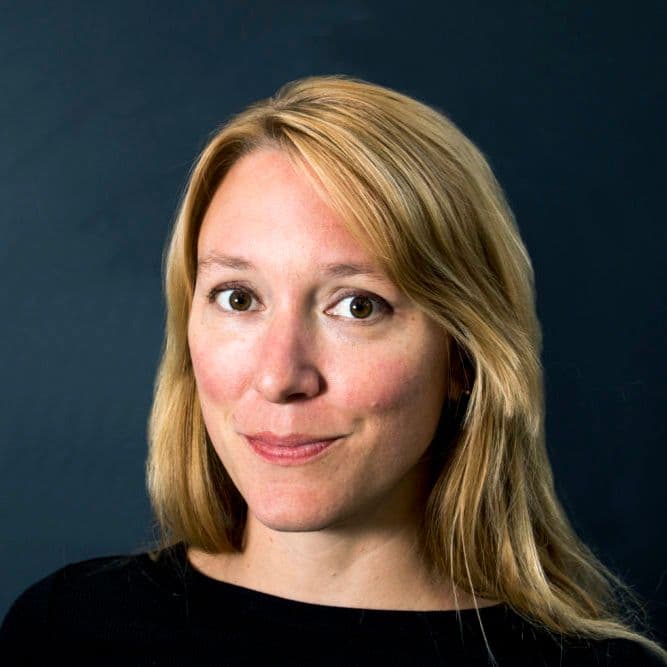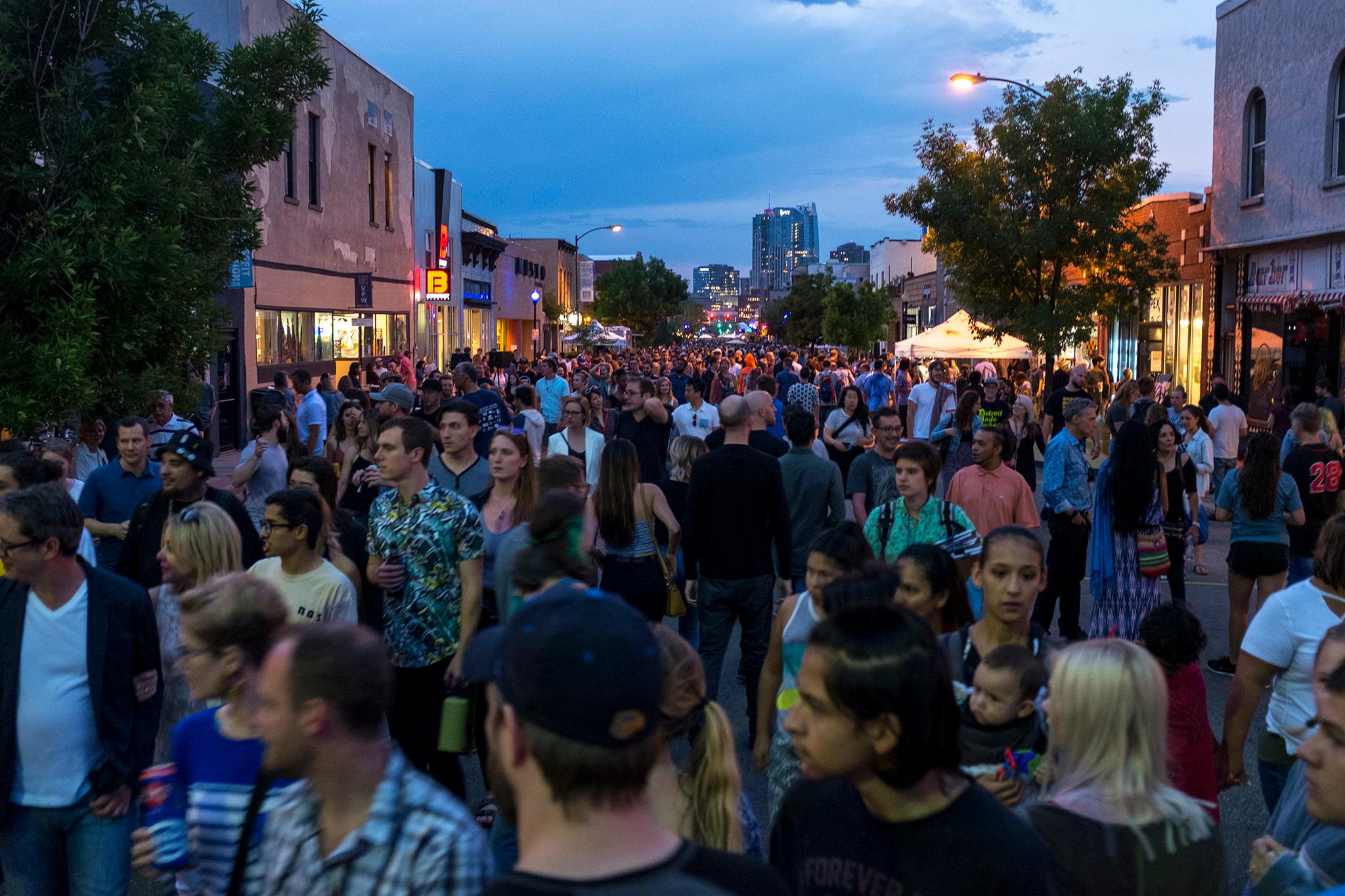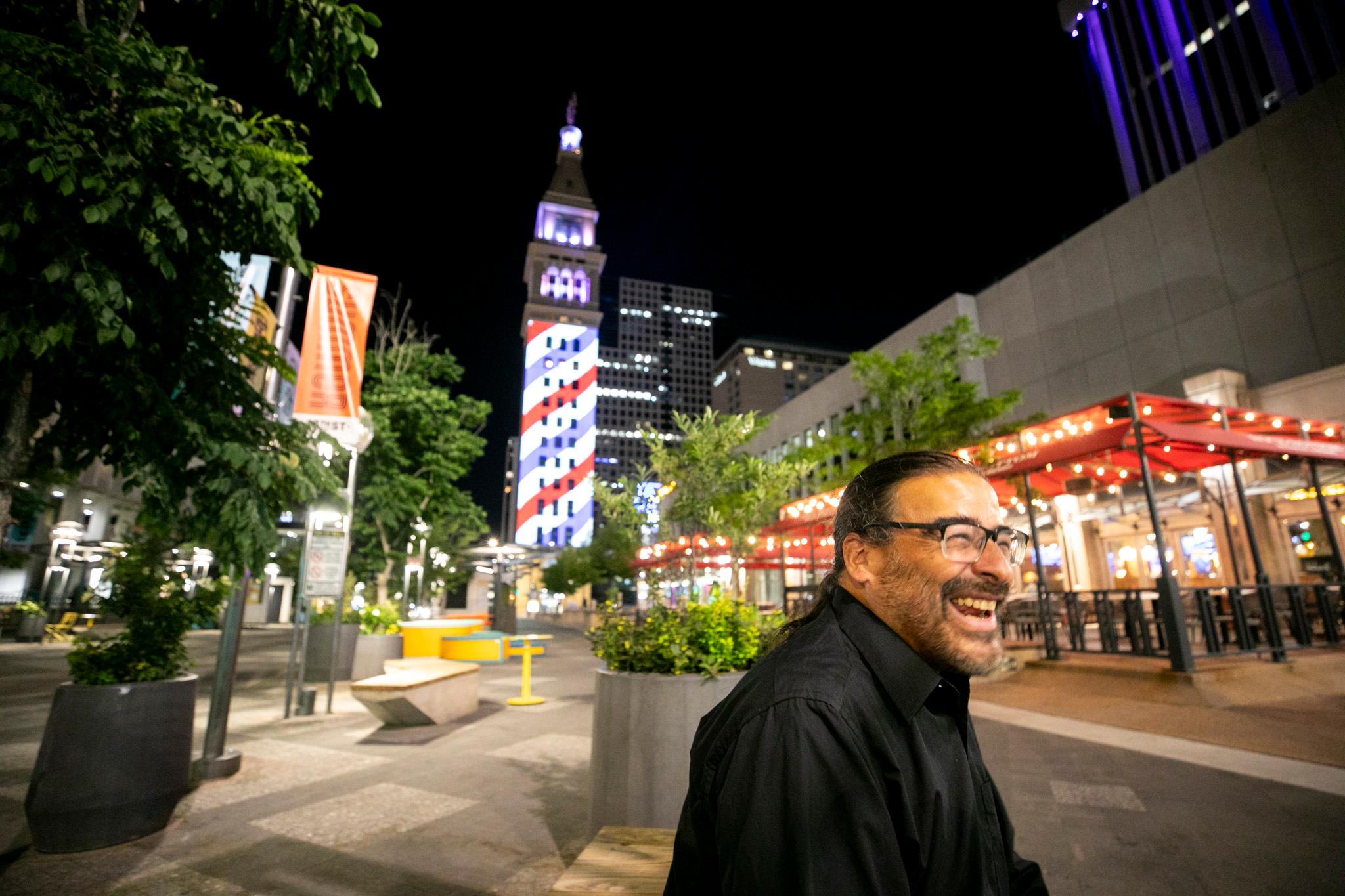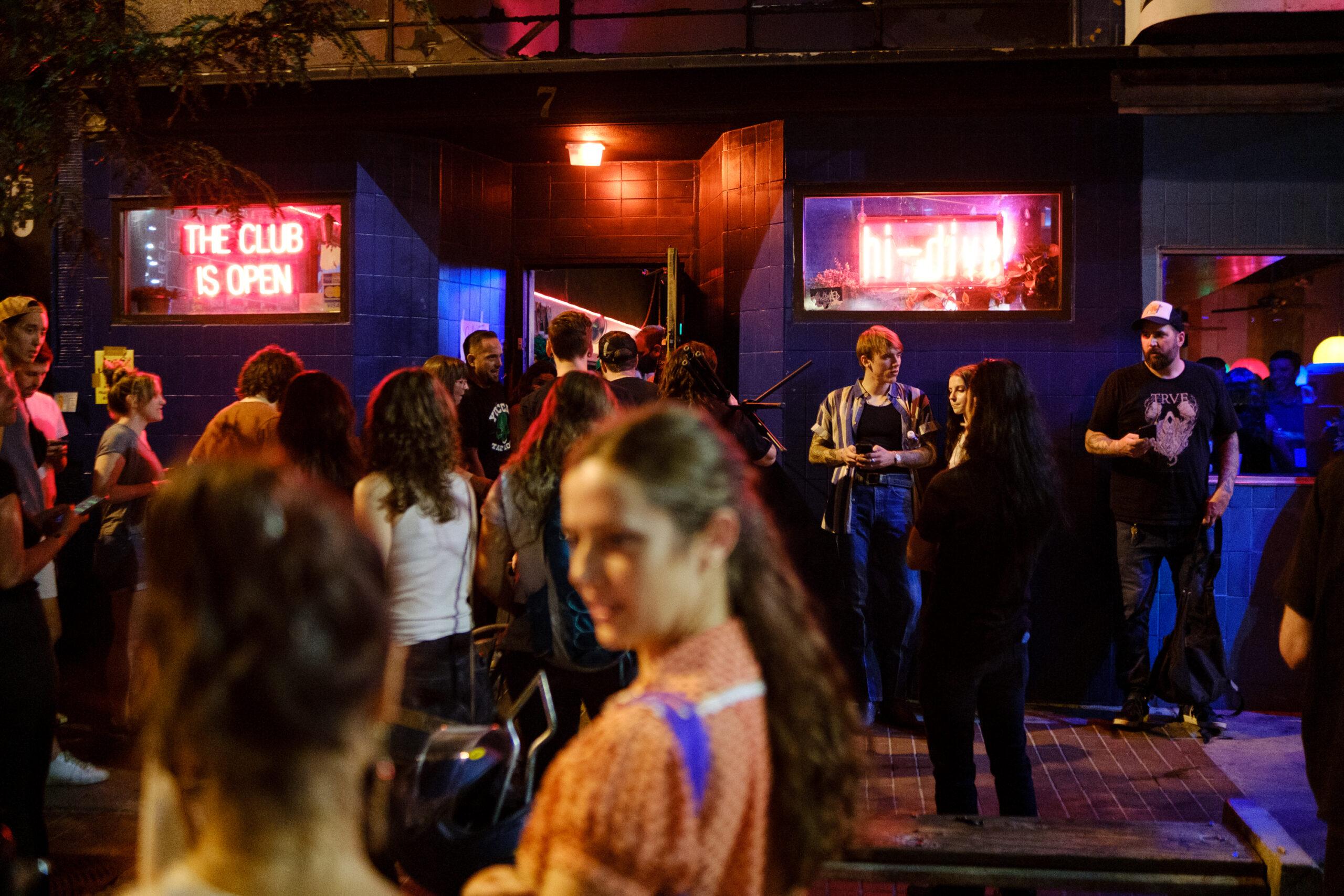It’s a blustery but mercifully cool summer evening in Denver, and Santa Fe Drive is buzzing. Four blocks along the gallery-laden strip and its side streets have been fenced off and occupied by 15,000 people and dozens of food trucks for the biggest First Friday Art Walk of the year.
Every month, galleries on and around the stretch from Seventh to 11th avenues leave their doors open late for a neighborhood-wide reception. The event has been happening for more than a decade, drawing a growing and changing crowd in a growing and changing city. On its biggest night of the year, galleries were packed as people wandered, beverages in hand, from studios to food trucks to a live music stage.
“The First Friday Art Walk, on one hand, it’s not always a revenue generator for the businesses. However, it’s a really unpretentious foray into the art world if you’ve never stepped foot into a gallery,” Art District on Santa Fe President Amy Phare said. “Everyone is open, and it’s open to everyone. There’s highbrow art, there’s lowbrow art, there’s contemporary studios, there’s performance art. Whatever your price point and interest in art, there’s something for everyone.”
It’s been the Art District on Santa Fe’s best advertisement since before the district formally existed and it embodies much of what it’s about: accessibility and community.
The district started because it was cheap, and First Friday started because of a coincidence.
The Art District on Santa Fe is, technically speaking, Denver’s oldest art district. When Colorado decided to start certifying creative districts across the state, the Art District on Santa Fe was one of the first two, along with the Salida Creative District. But the Art District on Santa Fe organized long before then and the galleries have been there even longer.

You could date the start of it all back 36 years, to the year Macy Dorf came to Santa Fe Drive. His studio and gallery — then called Santa Fe Pottery and now called Artists on Santa Fe — is the oldest on the strip. When he moved in, he said, the area wasn’t yet desirable and it was easy to afford the rent at the more than 50-year-old building between Seventh and Eighth avenues. And when, in 1997, the building went up for sale in a move that caught all the tenants off guard, Dorf was able to buy it.
“The thing about it is the rents were really cheap,” Dorf said. “[Before] I bought the building they said the rents were gonna go up and everybody bailed out. … Everybody freaked out and everybody left because they knew the rent was going up and I bit the bullet not knowing anything about running a building, buying a building, managing a building, any of those things. To this day I still don’t know anything about owning a building.” (Right now, Dorf’s building is full with a gallery and 29 artists who rent space.)
Back then, he said, “you could have bought my whole block for $100,000.”
As the ‘90s came to an end and the new millennium dawned, other artists and gallery owners followed. Notable figures were being priced out of downtown as the neighborhood changed with the arrival of the ballpark.
“When Sandy Carson came here, Macy had already been here and some others. When she and others of her stature moved down here it was an indication that others should be looking here,” said Jack Pappalardo, co-owner of Georgia Amar’s Habitat Gallery & Studio and former Art District on Santa Fe president. “Gallery owners did not want to be at the mercy of leases and rising rents, so a lot of them came and bought.”
Pappalardo and his wife, artist Georgia Amar, bought their building at 828 Santa Fe Drive in 2003. It was around that time that Jeanie King opened Fresh Art Gallery at 900 Santa Fe Drive and Michael Burnett moved out of the Ballpark neighborhood and opened SPACE at 765 Santa Fe.
The district first started to come together with the unofficial first First Friday.
“The First Friday informally started with a guy who was a hairdresser above CHAC (Chicano Humanities and Arts Council) and he had a gallery on the first floor and we had our place. So one Friday night we had an opening and I looked across the street and he had an opening and we said, ‘Wow, maybe we should do something together,’” Dorf said. “And so then, the next thing that it came down to was there were a group of us starting to say we needed organization and they elected me, much to their dismay, as president.”
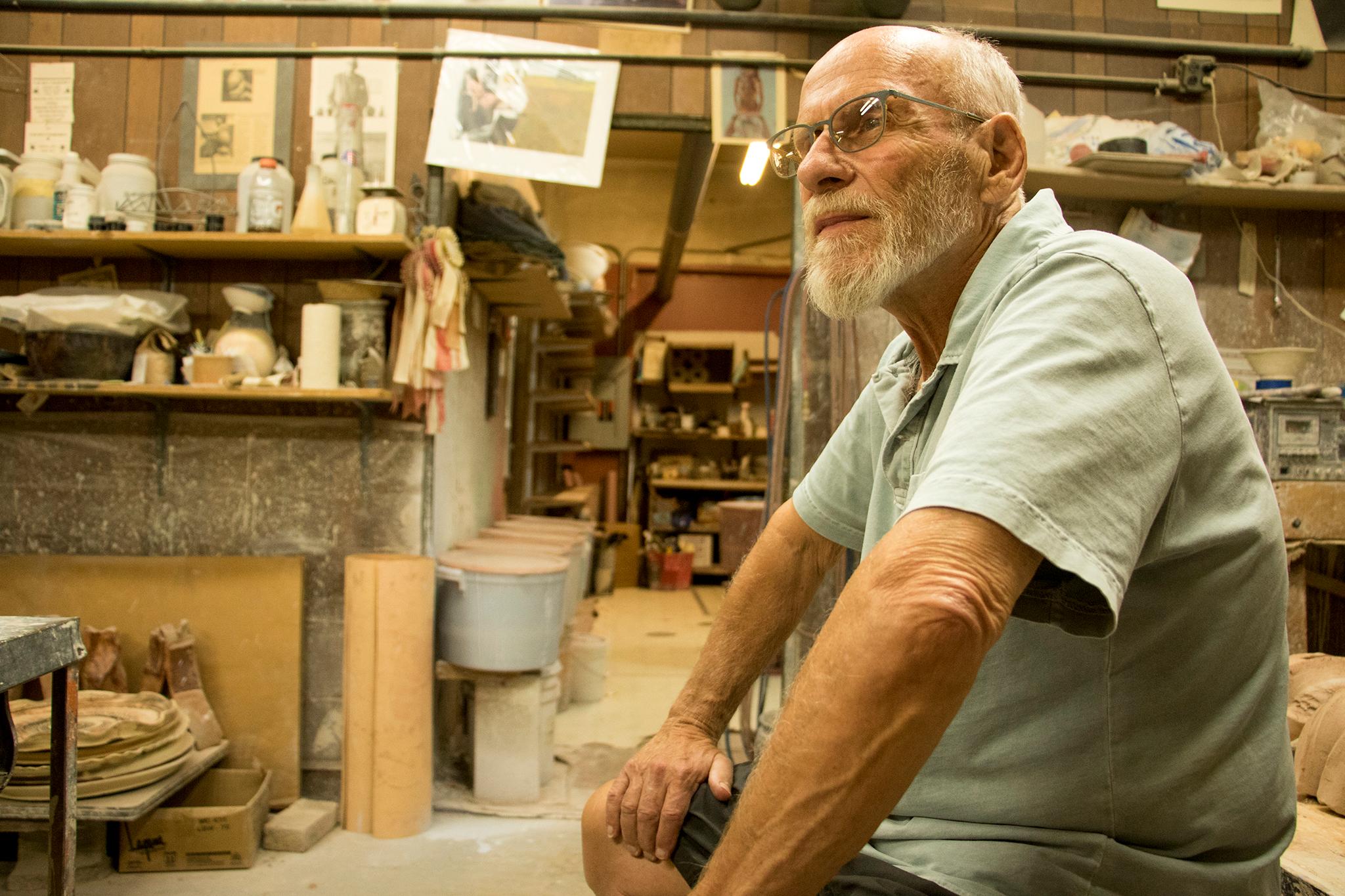
They started getting organized about advertising in Westword, the Denver Post and the Rocky Mountain News, and following the success of opening nights in other areas where galleries were clustered, they started formalizing First Fridays.
One year in, Pappalardo — a lawyer between jobs at the time — took over as president of the art district, a role he held until 2016 with a two-year break in the middle. Early on, he started partnering with Visit Denver, the Downtown Denver Partnership and the Denver Office of Cultural Affairs (now Denver Arts & Venues) to get institutional support for the district. He also expanded the membership by welcoming a broader variety of artists and businesses.
Visit Denver started promoting the district and, in a big turning point, the Denver Art Museum started having member events there.
“The buzz was starting to percolate about Santa Fe Drive,” Pappalardo said. “We had all these new people from the suburbs and from Denver who hadn’t been here before, and they loved it. By the third [DAM] event we literally had to cut off the RSVP at 1,000 because it was just wildly popular. Then we were off and running.”
First Fridays started to take off, drawing 5,000 people within the next five years, partly thanks to the free wine and beer gallery owners would offer. (A dead tradition now. It was too expensive and drew too many people only looking to party, Dorf and Pappalardo said.)
“It was not done by some professionals who came in and said, ‘Listen, we know how we can make you the place in Denver,’” Dorf said. “I always say art galleries and art districts become vibrant in spite of themselves. It’s not a planned thing.”
“We are the classic example of an organically grown creative district,” Pappalardo said.
The district has changed a lot and it’s still changing a lot.
Artists, of course, were not the first residents of Santa Fe Drive. The population has historically been Latinx and area has a deep and rich history as the hub of the Chicano movement.
And the movement has at least one strong tie to the rise of the art district: CHAC. The group moved from the northside to 774 Santa Fe Drive in 1991. Stevon Lucero, one of CHAC’s founding members, told Denverite the building’s owner rented to them “because he wanted to see something happen, because it was a dying street.”
To him, the connection is clear: “Look at what the young people do in the streets when they’re poor. They fix the cars up, they turn them into lowriders. They paint pictures on them. They tattoo themselves when they’re in prison. They draw, they paint. There’s this inherent thing within our community, and it’s part of this kind of spirituality that we have.”
Earlier this year, CHAC was priced out of its longtime home and moved down to 222 Santa Fe Drive, several blocks off the main art district strip.
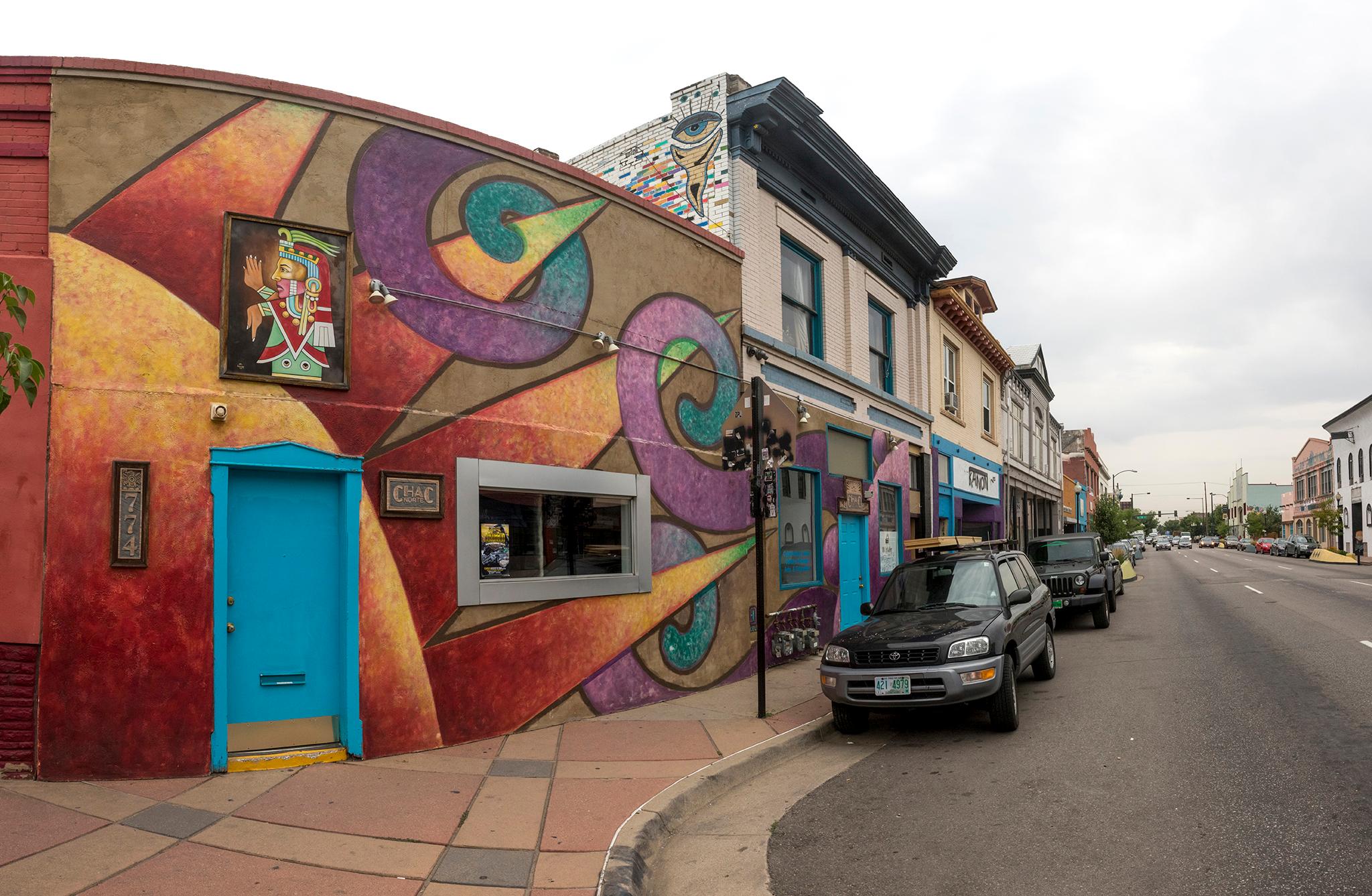
Members of the La Alma-Lincoln Park Neighborhood Association, representing one of Denver’s oldest neighborhoods on the northern end of Santa Fe Drive, told Denverite that CHAC is a bellwether. The change signals trouble for both the art community and the Chicano community — communities that have either successfully coexisted or been engaged a long, slow dance of gentrification, depending on who you ask and how you look at it.
“I try not to use the word gentrification,” said David Griggs, an artist who has lives and works just off Santa Fe with his wife, Stella Yu. “It means something different to everybody. And according to some folks that we’ve talked to, Stella and I are sort of instigators at gentrification in this neighborhood. … We moved in 22 years ago.”
“You can call us gentrifiers or you can call us stabilizers,” Yu added. “Because we’ve been here so long and we took care of our place. Our place was tagged right after we moved in, consistently, and I put out a sign saying I’m going to be here for a long time. … I said stop, and they did.”
Dorf and Pappalardo also have stories of tagging from their early years on Santa Fe, with similar resolutions.
“When we moved here what we tried to do is try to make friends with the people who were here,” Pappalardo said. “We saw people walking up and down our alley. We would get some of the people coming down the alley to come work for us, and they enjoyed it and we paid them and would invite them to come and get a beer with us. We became part of the neighborhood.”
So far, turnover on Santa Fe Drive has often worked in favor of the arts. Fresh Art became Core New Art Space and Spark Gallery. Burnett sold 765 Santa Fe and built himself a new gallery that doubles as an event space at the corner of Fourth Avenue. His old spot is now home to ReCreative Denver, a nonprofit creative reuse shop, arts education center and event space. Pappalardo said he’s been pleasantly surprised to see new creative businesses open when buildings change hands.
“You’ve seen a lot of the art districts come and go in Denver, and we’re now 16 years or so in, and one of the keys, I believe, is we had and still do have ownership interest,” Pappalardo said. “There were a lot of us that own our building and ran our business out of it, and in a sense we had invested a good portion of our life savings and we had to make this work. We had to band together and figure out how to make this work.”
Gentrification is “something I struggle with every day of my life,” Phare said. It’s been a hot topic in her first two and a half years as president of the Art District on Santa Fe, and it’ll stay that was going forward.
The key to keeping artists around, she said, will be smart development. The area needs a diversity of businesses bringing in a variety of people to remain vibrant, and it also needs developers who respect the community they’re building in.
“We have a really rich Latino heritage. We have a lot of working artists. If a developer comes in, we want them to respect the average household income in the neighborhood and make housing affordable for people who live and work there,” Phare said.
It’s a sentiment she shares with members of the La Alma-Lincoln Park group, who have talked with developers about respecting the existing neighborhood culturally and architecturally.
“We’re not afraid of density or new development … at all,” said Ann Nguyen, an urban planner, landscape architect and member of the neighborhood association, “we just want it to be a part of the neighborhood.”
Phare and the art district board worry about affordable housing, too. As she pointed out, it would be disingenuous to call it an art district if artists can no longer live there.
And trying to protect an arts community from gentrification while taking care not to be gentrifiers themselves is not a simple task.
“It’s a very complex issue and I don’t have the answer for it,” Phare said, “but we are doing the best that we can to make sure that we keep the artists there, that we keep our Latino neighbors there and that we preserve the roots that made the neighborhood the reason why everyone wants to come there.”
The galleries have come a long way since that early first Friday coincidence.
“Here is my definition of an art gallery,” Dorf said. “It’s a marginal business in a low-rent district.”
On Santa Fe Drive in 2018, it’s hard to say whether that definition still works. Denver is getting pricier and pricier, and no neighborhood is immune. But the Art District on Santa Fe continues to either thrive or survive — it depends on how you look at it.
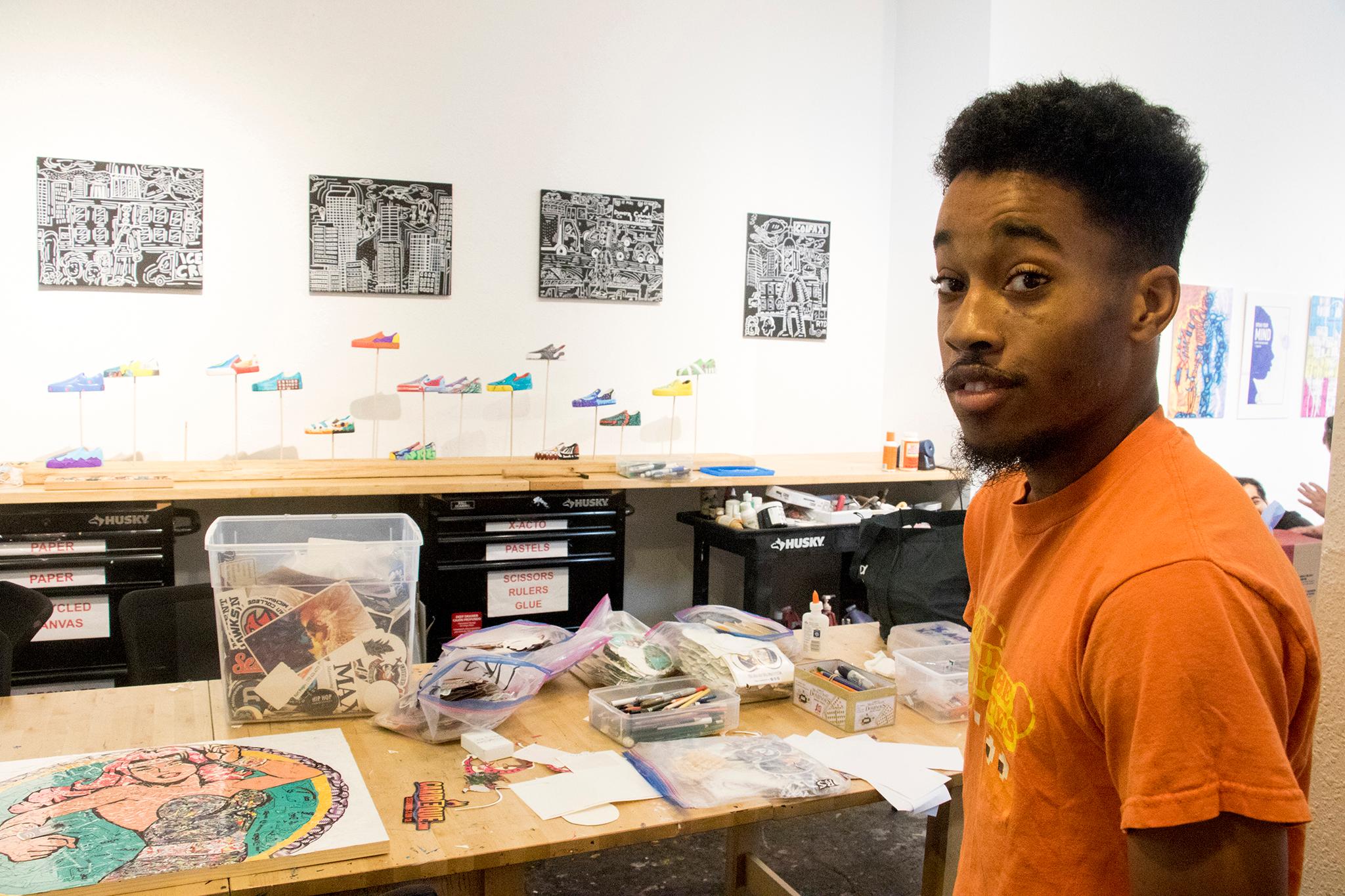
In the years since Phare took over, a lot has changed. The board completely changed when she was elected in 2016. New members had nonprofit management experience, event planning experience, communications experience.
From there, they increased promotion, advertising their members on social media, on their website and in their newsletter. They also launched free programming that includes the Art on Film series and the Art of Brunch crawl.
“That kind of aligns with our tagline, ‘Art For All.’ We really want to maintain our accessibility factor,” Phare said.
“One thing that we’re trying to do is truly blend the culture and the art. So events like the Art on Film series we host in collaboration with Su Teatro and we’re showing Spanish language films and Latino performers. The kids there have been selling food as a fundraiser. That community collaboration and that general respect of that history and the focus on that economic development factor for artists — blending the two is something that we feel really strongly about.”
Running an art district is not without its challenges. Asked what the big ones are, Phare said, “Finances. Always. And that hasn’t changed.”
Creative districts are all funded differently, she explained. There are about 20 in the state, and the rural districts get funding through the cities and can pay a staff person. In Denver, that’s not the case, and different districts go different routes. RiNo Art District, for example, has implemented several business improvement districts and general improvement districts that overlap to fund their nonprofit. That means they’re taxing everyone in the district.
“We don’t want to tax our businesses, our artists. We have a lot of integrity and we believe that we need to employ our artists. We need to keep housing affordable for our artists in our community if we are going to claim that we’re an art district, otherwise it’s disingenuous,” Phare said. “We want to be authentic, practice what we preach and maintain that authenticity and keep the neighborhood accessible to arts.”
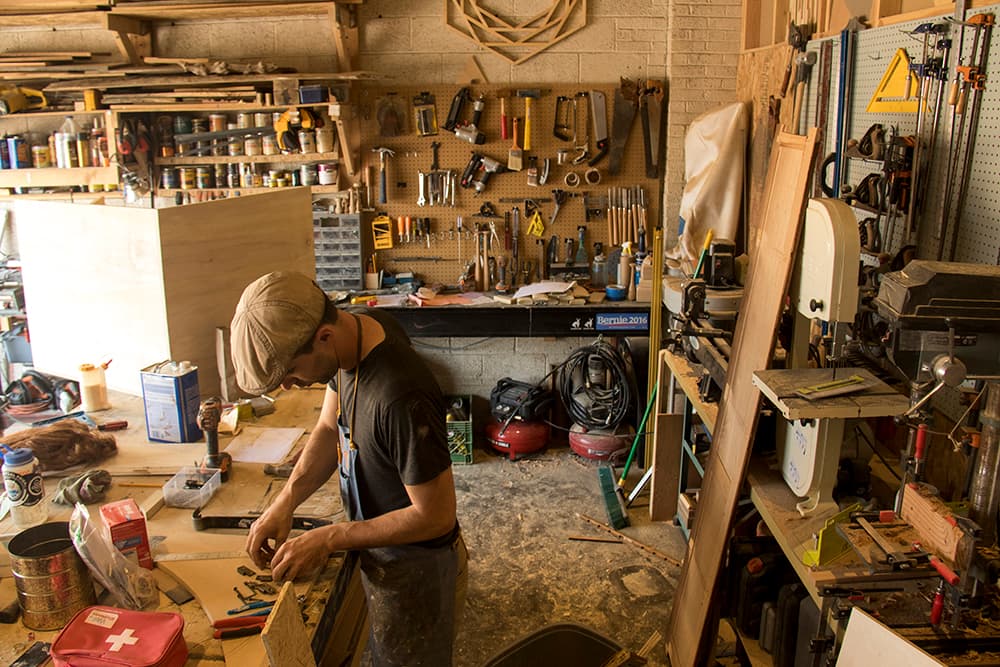
Instead, the Art District on Santa Fe through membership fees, sponsorships and donations. Thanks in part to an anonymous donation last year their operating budget was $60,000. It operates entirely on volunteers. For comparison: RiNo Art District has a budget of more than $1 million and a staff of six.
Membership costs $360 a year — just under a dollar a day — for a business and $180 for an individual. The district just added an individual supporter category for residents and supporters of the arts that costs $75 per year. Of the business members, many are galleries and studios but many others are shops, restaurants, bars and creative services business.
There are 30 arts and culture members listed on the district’s website right now, and they represent a diverse selection of arts on Santa Fe. Among them: the Colorado Ballet, live-work art space 910Arts, collaborative studio and gallery space Bitfactory Gallery, screen-printing workshop Ink Lounge, Museo de las Americas and VFW Post 1. You could spend hours exploring them an not find every unique nook and cranny — studios tucked into attics, basements, garages and alleys.
That’s what 15,000 people do on Santa Fe every First Friday. If August’s fête — where, strolling down the street, you could overhear rave reviews of galleries, artworks and tacos — was any indication, enthusiasm for the art walk is only growing as Denver grows.
And as long as the Art District on Santa Fe keeps pushing, there’ll be plenty of hours to keep exploring. The next First Friday is one month away.
Kevin J. Beaty contributed to this report.
